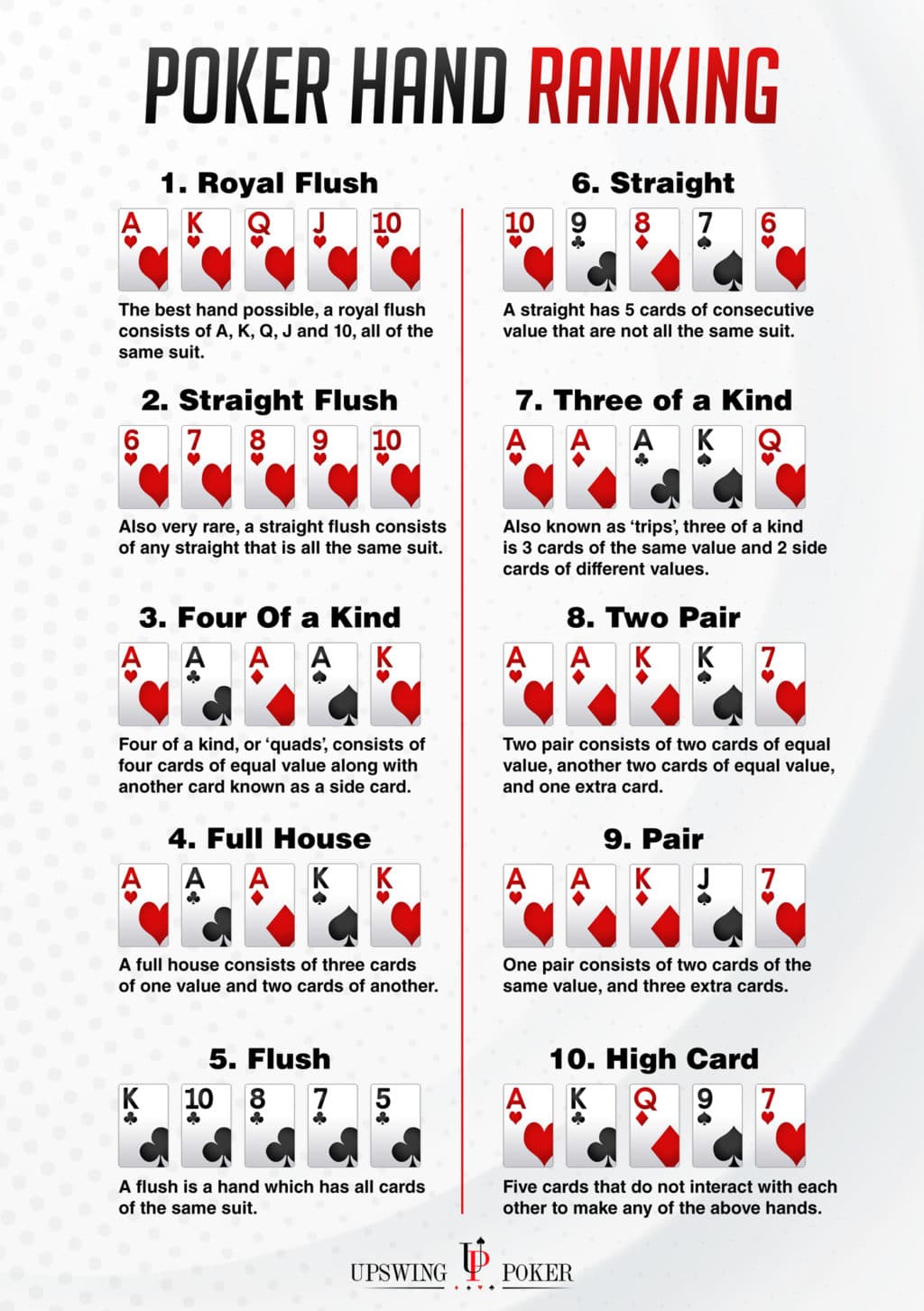Welcome to the thrilling world of Texas Hold’em poker! Have you ever wondered what the rules of this popular card game are? Well, you’re in luck because today we’re diving into the ins and outs of Texas Hold’em poker. So grab a deck of cards, put on your poker face, and let’s get started!
Texas Hold’em is a game of strategy, skill, and a touch of luck. It’s played with a standard 52-card deck and can be enjoyed by both beginners and seasoned players. Whether you’re playing with friends at home or competing in a high-stakes tournament, understanding the rules is essential to the game.
In this article, we’ll break down the key rules of Texas Hold’em and guide you through the gameplay, from the initial deal to the final showdown. So get ready to learn the ropes and become a poker pro in no time. Let’s shuffle up and deal!
Get ready to learn the exciting game of Texas Hold’em Poker! This popular variation of poker is easy to learn and offers thrilling gameplay. In Texas Hold’em Poker, each player is dealt two private cards, and then five community cards are dealt face-up on the table. The objective is to make the best five-card hand using any combination of the seven cards available. With its strategic gameplay and suspenseful moments, Texas Hold’em Poker is sure to provide hours of entertainment!

Understanding the Rules of Texas Hold’em Poker
Welcome to the exciting world of Texas Hold’em Poker! Whether you’re a newbie or a seasoned player, it’s essential to understand the rules of the game to maximize your chances of winning. In this article, we’ll break down the key elements of Texas Hold’em Poker and provide you with a comprehensive guide to playing the game like a pro. So, let’s dive in and explore the rules that govern this thrilling and strategic card game.
1. The Basics of Texas Hold’em Poker
Before we delve into the intricacies of the game, it’s crucial to grasp the fundamental principles of Texas Hold’em Poker. The game is typically played with a standard 52-card deck and accommodates two to ten players. Each player aims to create the best five-card hand possible by combining their own two private cards, known as “hole cards,” with five shared community cards. The objective is to win the pot, which consists of all the bets placed throughout the course of the game.
At the beginning of each hand, two players sitting clockwise to the dealer place mandatory initial bets, called the “small blind” and the “big blind.” These blinds ensure that there is money in the pot to compete for. As the game progresses, each player has the opportunity to fold (quit the hand), call (match the previous bet), or raise (increase the bet). The action continues clockwise until all players have either folded or called the highest bet.
Once all the bets have been equalized, the dealer reveals the community cards in three stages: the flop (three cards), the turn (one card), and the river (one card). These community cards are shared by all players and can be used in combination with their hole cards to form the best possible hand. The player with the highest-ranking hand at the end of the hand wins the pot.
2. Hand Rankings in Texas Hold’em Poker
To succeed in Texas Hold’em Poker, it’s essential to know the various hand rankings. Here’s a breakdown of the poker hands in ascending order:
- High Card: If no player has any of the below combinations, the highest card in their hand determines the winner.
- One Pair: Two cards of the same rank.
- Two Pair: Two sets of two cards of the same rank.
- Three of a Kind: Three cards of the same rank.
- Straight: Five consecutive cards of any suit.
- Flush: Five cards of the same suit, not in consecutive order.
- Full House: A combination of one pair and three of a kind.
- Four of a Kind: Four cards of the same rank.
- Straight Flush: Five consecutive cards of the same suit.
- Royal Flush: A straight flush from ten to ace, all of the same suit.
These hand rankings determine the winner in cases where multiple players have competing combinations.
3. Strategies and Tips for Texas Hold’em Poker
Becoming a skilled Texas Hold’em Poker player requires a combination of luck, skill, and strategic thinking. Here are some tips to improve your gameplay:
- Starting Hand Selection: Focus on playing strong starting hands, such as high pairs (e.g., aces or kings) and high-ranking suited connectors (e.g., Ace-King suited), and fold weaker hands.
- Position: Consider your position at the table when making decisions. Players in later positions have an advantage as they have more information about previous players’ actions.
- Reading Opponents: Pay attention to your opponents’ betting patterns, body language, and playing styles to gain insight into their potential hands.
- Bluffing: Bluffing can be a powerful tool, but it should be used strategically. Opt for well-timed bluffs when the situation calls for it.
- Bankroll Management: Manage your bankroll wisely to ensure you have enough chips to stay in the game. Set limits and avoid overextending yourself financially.
By implementing these strategies and continually honing your skills, you can elevate your Texas Hold’em Poker gameplay and increase your chances of winning.
Mastering Texas Hold’em Poker
4. Understanding the Importance of Position
Position plays a significant role in Texas Hold’em Poker and can greatly influence your decision-making process. Let’s explore the different positions at the poker table and how they can impact your strategy.
Early Position: Players in early positions, such as the player sitting to the left of the big blind, are at a disadvantage as they have less information about the other players’ actions. It’s advisable to play cautiously and choose stronger starting hands.
Middle Position: Players in middle positions have more information about the players in early positions and can make more informed decisions. They should still exercise caution but can consider playing a wider range of starting hands.
Late Position: Players in late positions, such as the dealer and the players sitting to their right, have a significant advantage as they can observe the actions of all other players before it’s their turn to act. They can play a wider range of hands and capitalize on their position to make strategic moves.
5. The Art of Bluffing in Texas Hold’em Poker
Bluffing is a crucial aspect of Texas Hold’em Poker and can enable you to win hands even when you don’t have the best cards. Here are some key points to consider when bluffing:
Timing: Bluff when you sense weakness in your opponents or when the community cards on the table could have potentially improved their hands. A well-timed bluff can force opponents to fold and secure you the pot.
Observation: Pay attention to your opponents’ betting patterns and body language. If you notice signs of hesitation or uncertainty, it may indicate weakness, making it an opportune moment to bluff.
Table Image: Cultivate a tight and aggressive table image by playing strong hands consistently. This can make your bluffs more effective, as opponents may perceive you as a cautious player who only bets with good hands.
6. Advanced Strategies for Texas Hold’em Poker
Beyond the basics, advanced strategies can take your Texas Hold’em Poker skills to new heights. Here are a few concepts to consider:
Range Analysis: Analyze your opponents’ potential ranges of hands based on their betting patterns and actions, allowing you to make more accurate decisions.
Pot Odds: Calculate the pot odds, considering the ratio of the current pot size to the cost of your potential call. This helps determine whether a call is profitable in the long run.
GTO Strategy: Game Theory Optimal (GTO) strategy involves finding the perfect balance of hands to play in each situation. It aims to make it impossible for opponents to exploit your strategy.
By incorporating these advanced strategies into your gameplay, you can become a formidable force at the Texas Hold’em Poker table.
Becoming a Texas Hold’em Poker Pro
7. Playing Texas Hold’em Poker Online
The internet has revolutionized the world of poker, and playing Texas Hold’em online offers numerous advantages. Whether you’re a beginner or an experienced player, online poker platforms provide a convenient and accessible way to enjoy the game. Here are some benefits of playing Texas Hold’em Poker online:
- Convenience: Play from the comfort of your home, anytime you want, without the need to travel to a physical casino.
- Wide Variety of Games: Online poker platforms offer a vast selection of cash games, tournaments, and different stake levels to cater to players of all skill levels and bankrolls.
- Practice and Learn: Online poker allows you to practice and improve your skills without the pressure of playing in a live setting. Many platforms also offer free play or low-stakes tables for beginners.
- Multi-Tabling: Online poker allows you to play multiple tables simultaneously, increasing the volume of hands you can play and accelerating your learning curve.
8. Responsible Gambling in Texas Hold’em Poker
While Texas Hold’em Poker can be an exciting and enjoyable game, it’s important to approach it with responsibility. Here are some tips for responsible gambling:
- Set Limits: Determine how much time and money you can afford to spend on poker and stick to those limits.
- Learn Bankroll Management: Allocate a separate portion of your funds for poker and never gamble with money set aside for essential expenses.
- Take Breaks: Avoid extended periods of play and take regular breaks to maintain focus and prevent exhaustion.
- Seek Support if Needed: If you feel that your gambling habits are becoming problematic, do not hesitate to reach out to support services or professional help.
By practicing responsible gambling, you can enjoy Texas Hold’em Poker as an entertaining pastime while minimizing the potential risks.
In summary, Texas Hold’em Poker is a thrilling card game with a set of rules that require strategic thinking, psychology, and skill. Whether you’re a beginner or an experienced player, understanding the basics, mastering hand rankings, and implementing various strategies can significantly enhance your gameplay. Remember to always play responsibly, whether you’re enjoying the game at a live table or in the online poker world. So, gather your chips, sharpen your skills, and may the best hand win!
Key Takeaways: What Are the Rules of Texas Hold’em Poker?
2. Each player is dealt two private cards, and then five community cards are placed face-up on the table.
3. The goal is to make the best five-card hand using any combination of the private and community cards.
4. Betting rounds occur after each round of dealing, giving players the chance to fold, call, or raise their bets.
5. The player with the highest-ranking hand at the end of the final betting round wins the pot.
Frequently Asked Questions
Curious about the rules of Texas Hold’em Poker? Look no further. Here are some commonly asked questions about the game and their answers.
1. How is Texas Hold’em Poker played?
In Texas Hold’em Poker, each player is dealt two private cards, known as “hole cards.” Then, five community cards are dealt face-up on the “board.” The objective of the game is to make the best hand possible using any combination of the hole cards and community cards. The player with the highest-ranked hand at the end wins the pot.
During the game, there are four rounds of betting, where players can either check, bet, call, raise, or fold. The four betting rounds are known as the pre-flop, the flop, the turn, and the river. Understanding the ranking of hands and the order of gameplay are essential to playing Texas Hold’em Poker.
2. What is the ranking of hands in Texas Hold’em Poker?
In Texas Hold’em Poker, hand rankings determine the winner. Here are the hand rankings, from highest to lowest:
– Royal Flush: A, K, Q, J, 10 of the same suit
– Straight Flush: Five consecutive cards of the same suit
– Four of a Kind: Four cards of the same rank
– Full House: Three of a kind and a pair
– Flush: Any five cards of the same suit, not in consecutive order
– Straight: Five consecutive cards of any suit
– Three of a Kind: Three cards of the same rank
– Two Pair: Two sets of two cards of the same rank
– One Pair: Two cards of the same rank
– High Card: The highest ranked card in your hand, when no other combinations are present
3. Can you explain how the betting rounds work?
In Texas Hold’em Poker, there are four rounds of betting: pre-flop, flop, turn, and river. Here’s a breakdown of each round:
– Pre-Flop: Before any community cards are dealt, the two players to the left of the dealer place the small blind and big blind. Then, each player is dealt their hole cards. Betting starts with the player to the left of the big blind.
– Flop: After the first round of betting, the dealer reveals the first three community cards (known as the flop). Another round of betting occurs, starting with the player to the left of the dealer.
– Turn: The dealer reveals the fourth community card (the turn) after the second round of betting. Betting continues in the same manner as before.
– River: The fifth and final community card (the river) is revealed, followed by the last round of betting. The player with the best hand wins the pot.
4. Are there any basic strategies for Texas Hold’em Poker?
While Texas Hold’em Poker involves an element of luck, there are some basic strategies that can help improve your game:
– Starting Hands: Learn which starting hands have a higher chance of winning. Play cautiously with weaker hands, and be more aggressive with stronger hands.
– Position: The position at the table can impact your strategy. Players in later positions have more information to base their decisions on.
– Reading Players: Pay attention to other players’ behavior, betting patterns, and body language to gain insights into their hands.
– Bankroll Management: Set a budget for yourself and avoid going all-in on every hand. Managing your bankroll is crucial for long-term success.
5. Where can I learn more about the rules and strategies of Texas Hold’em Poker?
There are various resources available to learn more about the rules and strategies of Texas Hold’em Poker. You can find books, online tutorials, and even video guides that provide in-depth explanations and tips. Additionally, many online poker rooms offer free play or low-stakes games, allowing you to practice and improve your skills without risking much money. Lastly, joining a local poker club or participating in poker tournaments can provide a hands-on experience and the opportunity to learn from seasoned players.
How to Play Poker – Texas Holdem Rules Made Easy
Summary
So, to sum up the rules of Texas Hold’em Poker: each player gets two cards, five community cards are dealt, and the goal is to make the best hand possible. You can bet, raise, or fold, and the player with the highest-ranking hand wins. Remember, it’s all about strategy and knowing when to take risks.
To be successful in this game, practice and understanding the different hands and their rankings are key. And don’t forget, it’s not just about luck, but also about reading your opponents and making smart decisions. Now you have the basics down, so gather your friends, shuffle the deck, and have a great time playing Texas Hold’em Poker!









